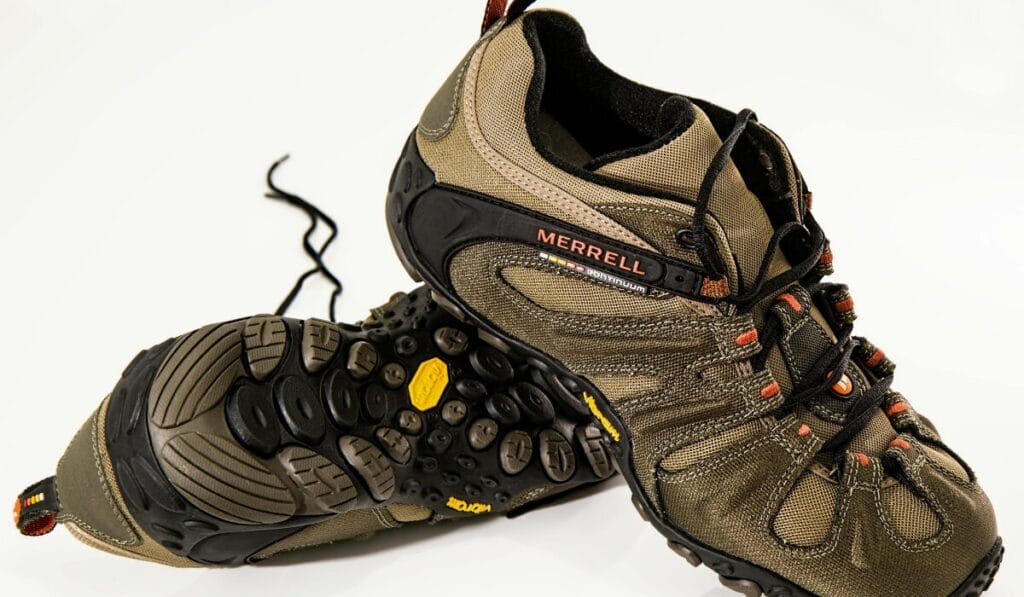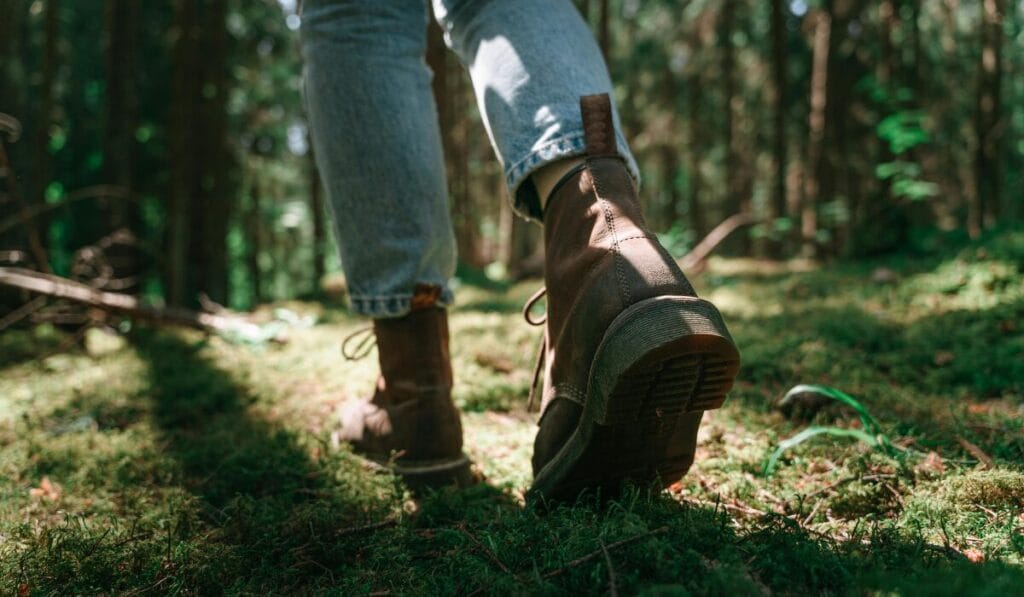Introduction
Whenever outdoor activities are mentioned, it comes to walking shoes vs trail shoes. Although both have the same design, i.e., comfort and mobility, their construction features are different. If one walks on flat ground or on trails, in both cases, one should choose a good pair of shoes.

What Are Walking Shoes?
Walking shoes are designed for walking on flat and slightly uneven surfaces, support natural gait, and provide cushioning and flexibility. Some of the features of walking shoes are mentioned below:
- Lightweight Design: They are lightweight which relieves fatigue during long flights.
- Flexible Soles: Allow a smooth transition from heel to toe for comfort.
- Cushioned Midsoles: Excess padding absorbs impacts on hard surfaces.
- Breathable Materials: There is mesh or fabric for cooling and sweat prevention.
- Essential Traction: Suitable for walking indoors and especially on the sidewalk.
What Are Trail Shoes?
Highly stable shoes designed to handle trails, rough terrains, dirt roads, rocky terrain, and forest tracks are referred to as trail shoes. They are exceptionally strong and provide enough stability. Trail shoes have the following features:
- Aggressive Outsoles: Deep lugs on the sole provide grip on loose and uneven surfaces.
- Reinforced Toe Caps: Protection from debris, rock roots, and hard surfaces.
- Stiffer Midsoles: Providing extra stability when walking on rough ground.
- Water-Resistant Materials: Most trail shoes are waterproof due to their hardness, which is called waterproof or resistant.
- Higher Ankle Support: Provides more protection than ankle supports to prevent rolling.
Key Differences Between Walking Shoes and Trail Shoes
Both shoes are intended to provide comfort but the activity is different.
- Terrain: Walking shoes are for use on smooth, flat and easy terrain. Trail shoes are for use on uneven, unpredictable and difficult terrain.
- Flexibility: Walking shoes have more flexibility because they are used for easy paths. Trail shoes are stiff because they are used for difficult terrain.
- Weight: Walking shoes are light in terms of their activity. Trail shoes are stiff because of their terrain.
- Grip: Walking shoes have less grip. Trail shoes have a higher level of grip due to slippery and rocky terrain.
- Protection: Walking shoes are intended to provide comfort. Trail shoes protect against hazards.
Pros & Cons of Walking Shoes vs Trail Shoes
Pros & Cons of Walking Shoes
| ✅Prose | ❌Cons |
| The texture is lightweight and breathable. They are perfect for both short and long walks. They are a combination of flexibility and comfort. | Not suitable for rough, muddy terrain. Not good enough for walking on rubble and rocks. |
Pros & Cons of Trail Shoes
| ✅Prose | ❌Cons |
| Provides superior grip for trails, dirt roads, and uneven terrain. Features protective toe caps and sturdy construction for foot protection. Often waterproof. | Heavier than walking shoes Can feel stiff on flat, smooth surfaces |
Can Trail Shoes Be Used for Walking?
Using trail shoes for walking is correct, but they can be a burden on the feet because they are a bit heavy, which is why walking shoes are the best option for urban use. However, if your route is one that includes trails, mud, flat areas, and roads, then using trail shoes is best for you.
On the other hand, using walking shoes on trails, mud, and uneven areas is not at all permissible, because walking shoes do not have the ability to walk on these areas and the shoes will soon tear and cause foot pain.

Which One Should You Choose?
The right choice depends on your preferences and life activities. Read below:
- For City Walks & Daily Commutes: Walking shoes are best because they provide the best comfort and flexibility.
- For Nature Trails & Hiking Paths: Trail shoes are better because they have traction, protection, and more durability and strength.
- For Occasional Outdoor Walking: Walking shoes are still the best option if someone walks lightly on light trails but is more prone to walking on sidewalks.
- For Rough & Muddy Terrain: Trail shoes have a strong grip and are also waterproof which is called resistance.
- For Lightweight Comfort: Walking shoes are the best if you want comfort and Lightweight that makes your feet happy.
Tips for Choosing the Right Footwear
- Evaluate Your Terrain: First, know what ground you are walking on.
- Check the Fit: Shoes should fit comfortably, while allowing room for toe movement and not too tight.
- Consider Weather Conditions: Waterproof Trail shoes are best used in wet environments.
- Look for Arch Support: Any shoe must fit the needs of the arch of your foot.
- Think About Foot Fatigue: A light pair of walking shoes is sufficient for long walks and times.
- Grip Matters: If the path is muddy, use deep walking shoes.

Conclusion of Walking Shoes vs Trail Shoes
So Walking shoes and trail shoes are completely different in terms of purpose, if your walk is on city pavements or smooth flat ground then use walking shoes because it is easy and comfortable and if your walk is on uneven terrains, forests, catches, trails then you need to use trail shoes because they provide great strength and high level of grip, choosing a good shoe is very important for your peaceful life and health. I hope you understand the difference between walking shoes and trail shoes.
FAQs
- Q1. What is the real difference between walking shoes and trail shoes?
Walking shoes are made for walking on paved, smooth, and flat ground with comfort, flexibility, and traction while trail shoes are made for walking on uneven, trails, forest paths,s and rough ground with great strength and grip.
- Q2. Can trail shoes be used for daily walking?
Yes, but trail shoes are heavy and stiff which may tire you but if your walking is also on trails then this is a good option.
- Q3. Can trail shoes be used on sidewalks?
Yes, but they are aggressive, which can damage the shoes. The best shoes for floors are walking shoes.
- Q4. Which shoes are best for long trips?
Walking shoes are best for both long and short journeys on roads, footpaths, and smooth flat ground because they have ease, comfort, and lightness, but if you intend to walk long distances on trails or dirt roads, then use trail shoes they are made for this type of terrain.

